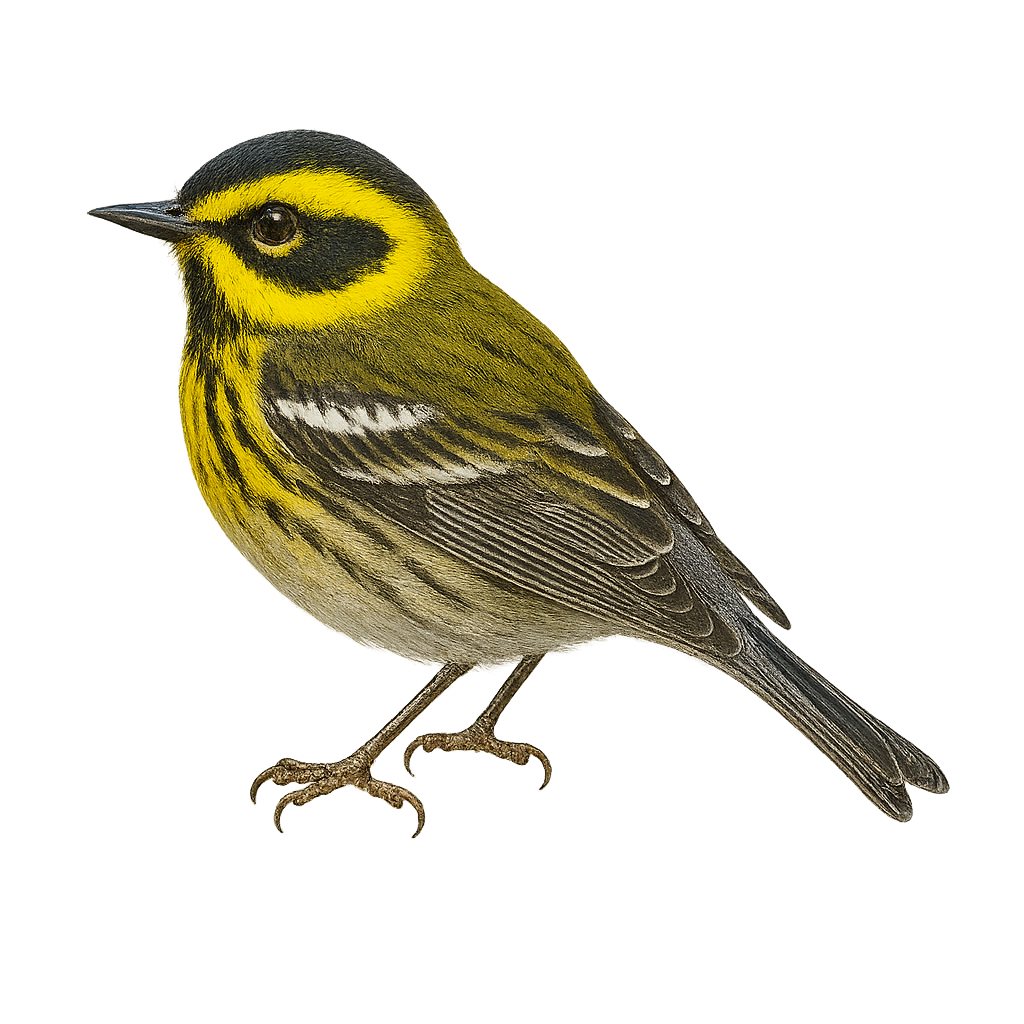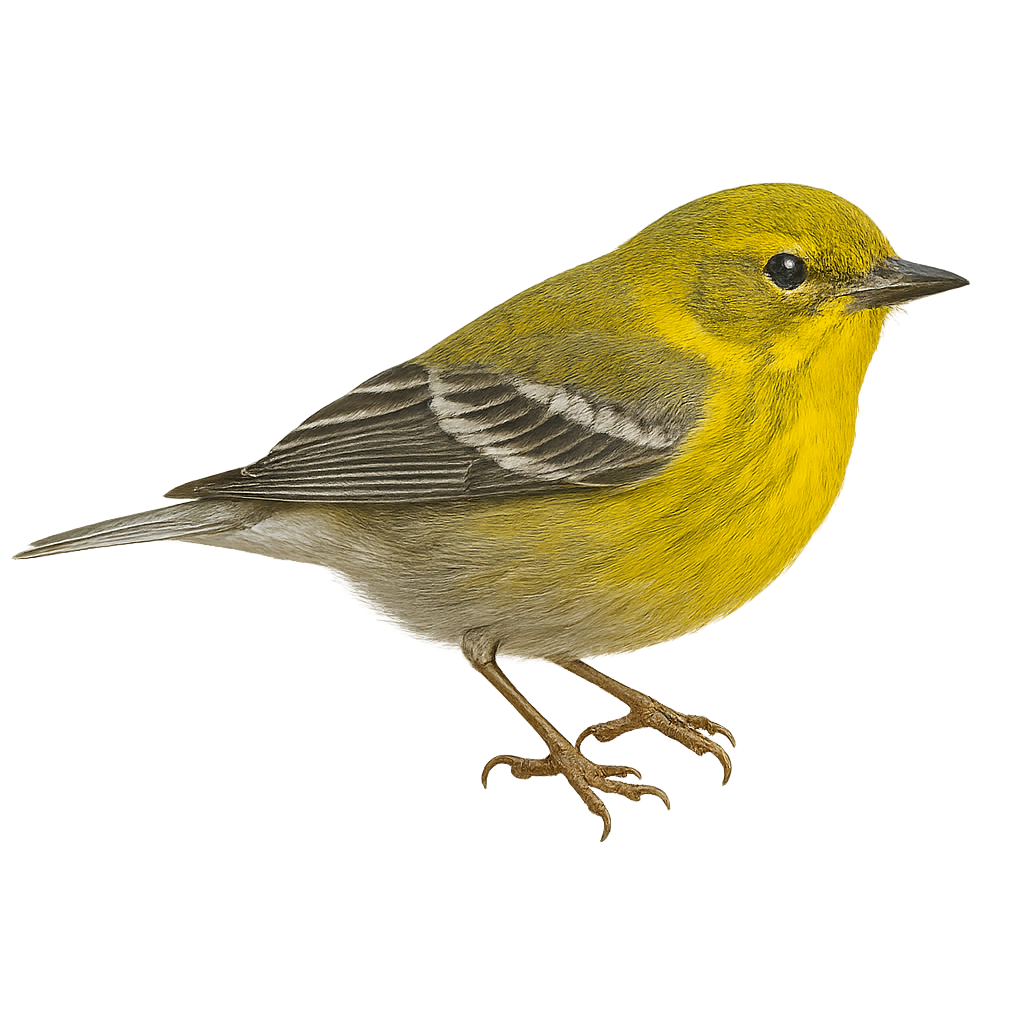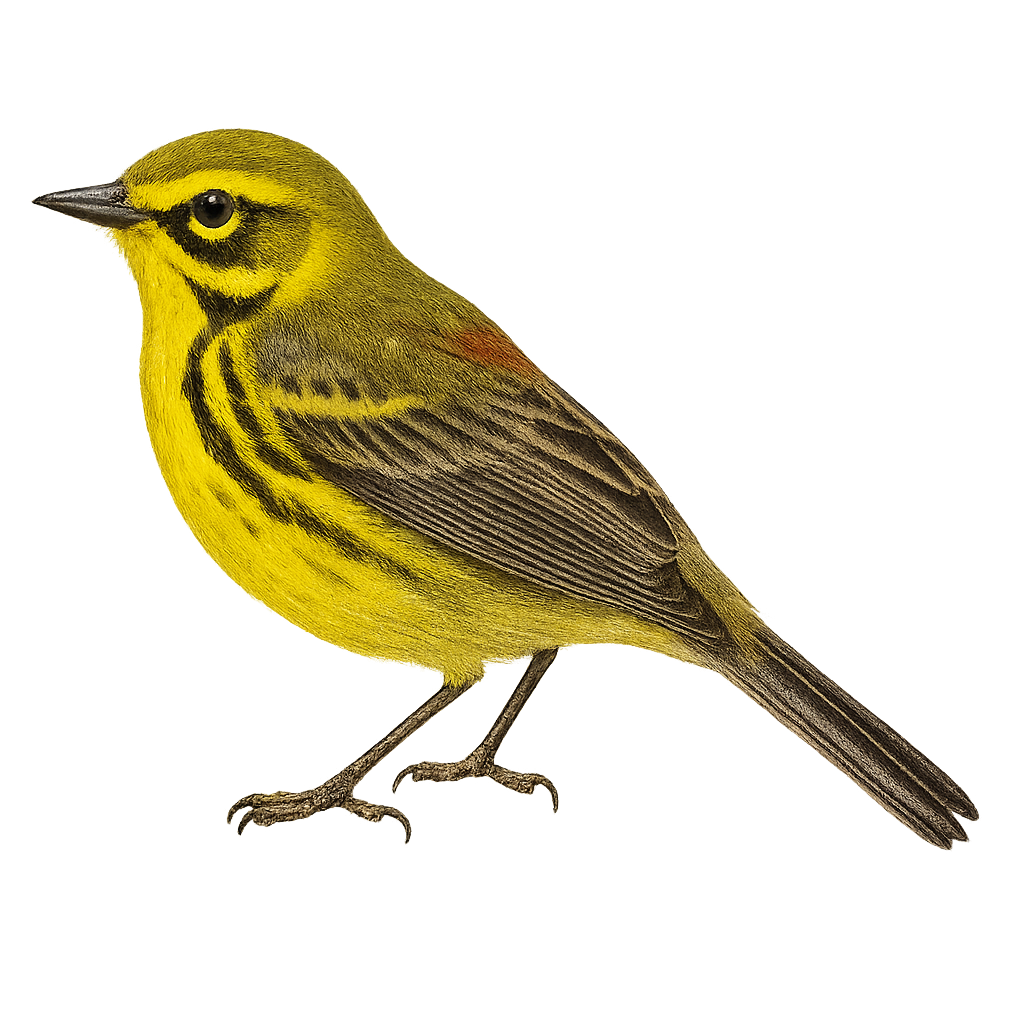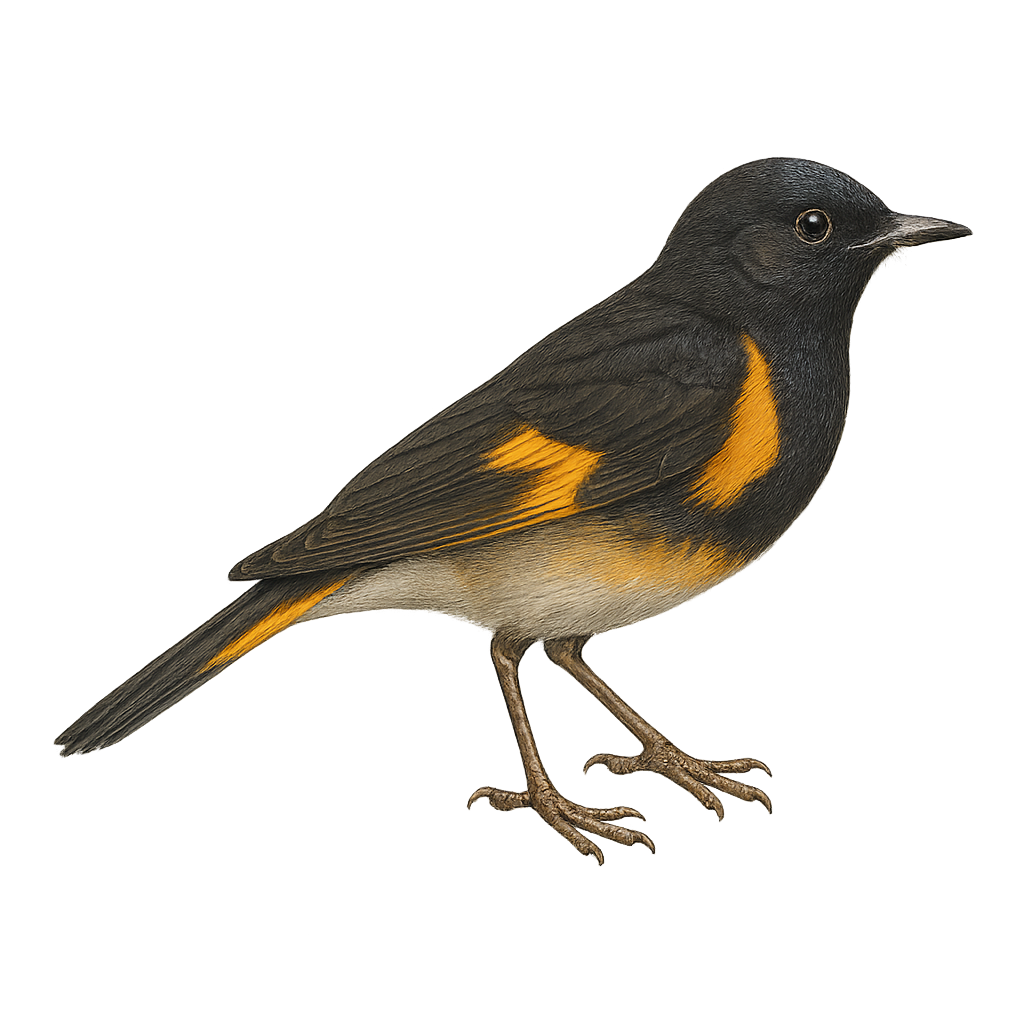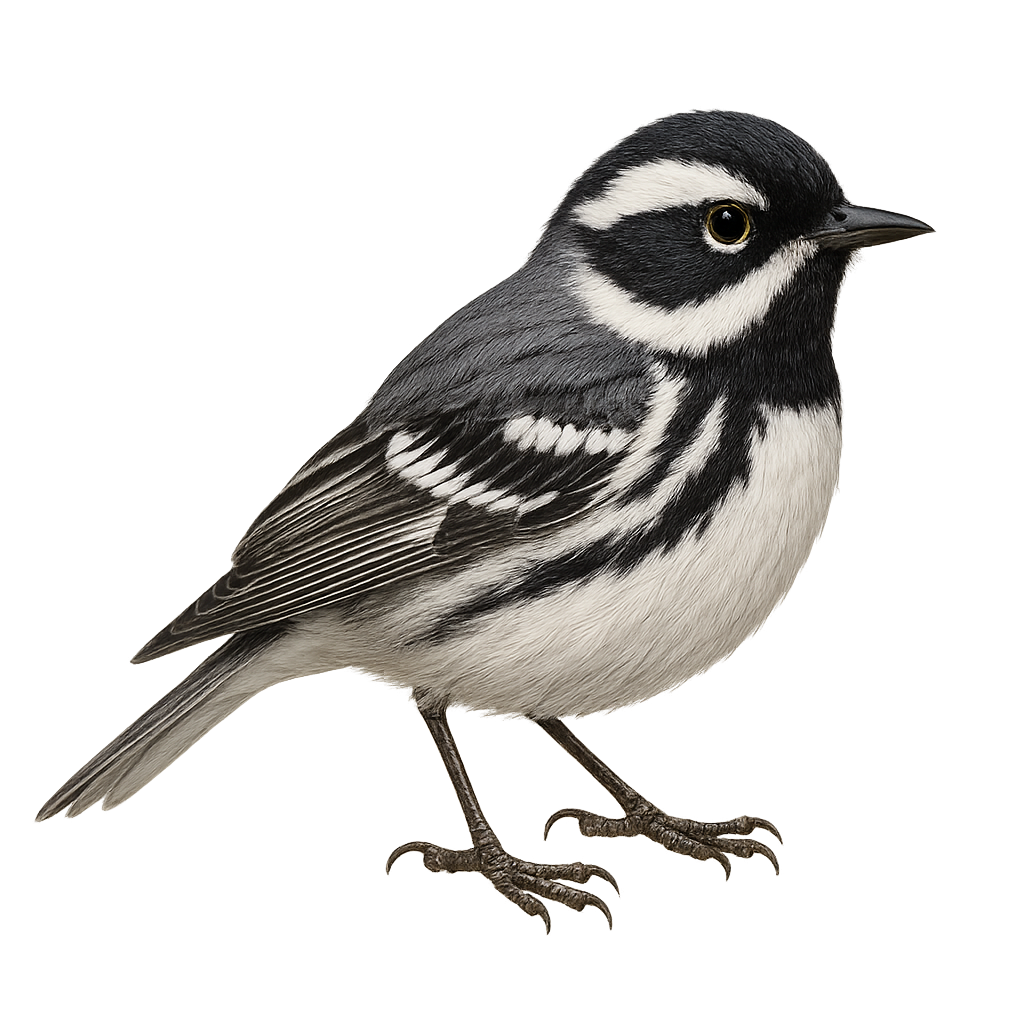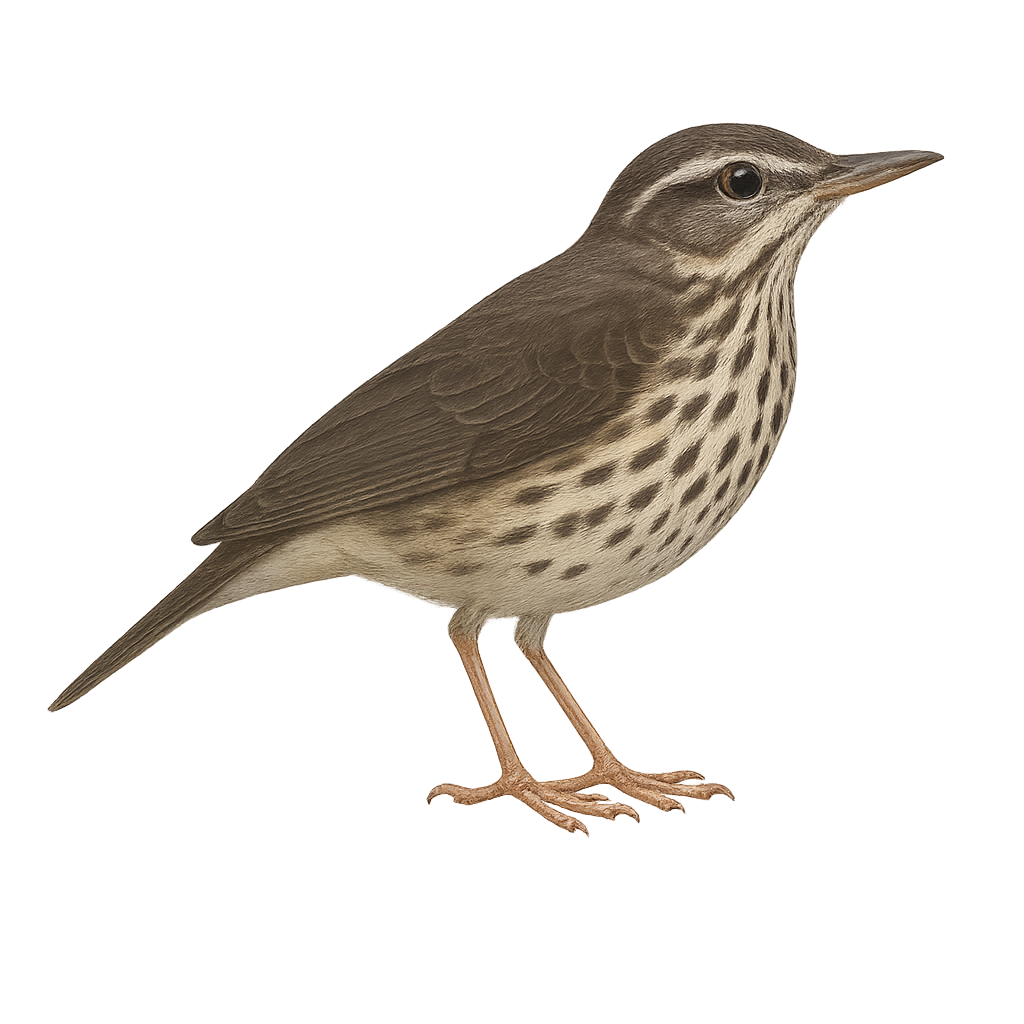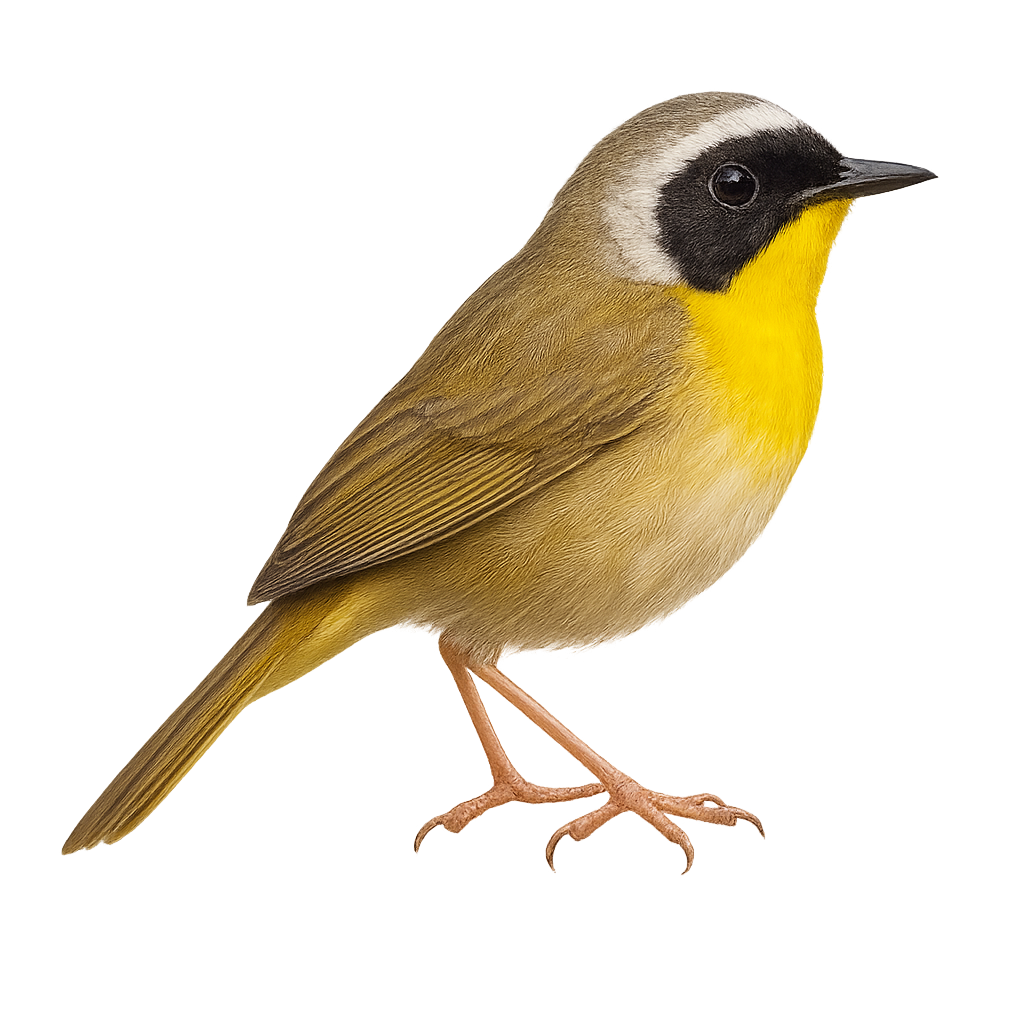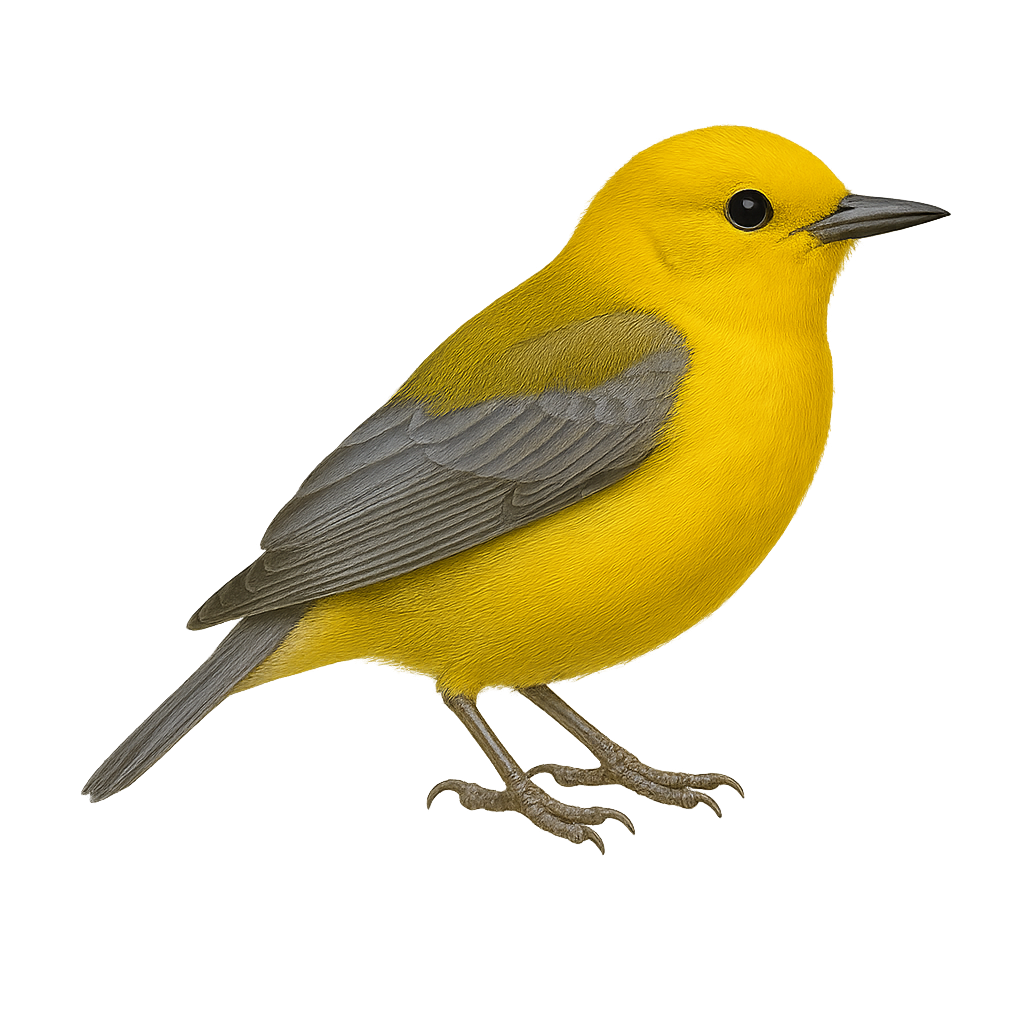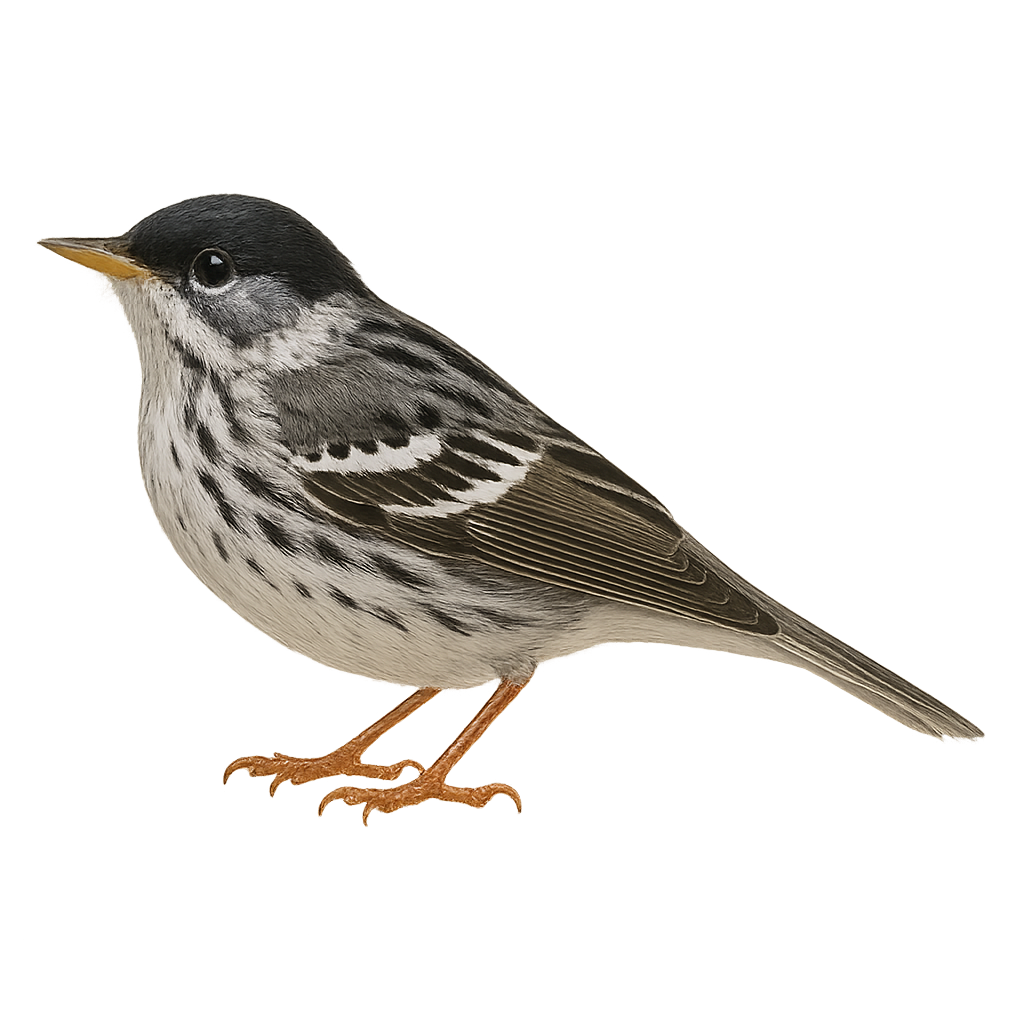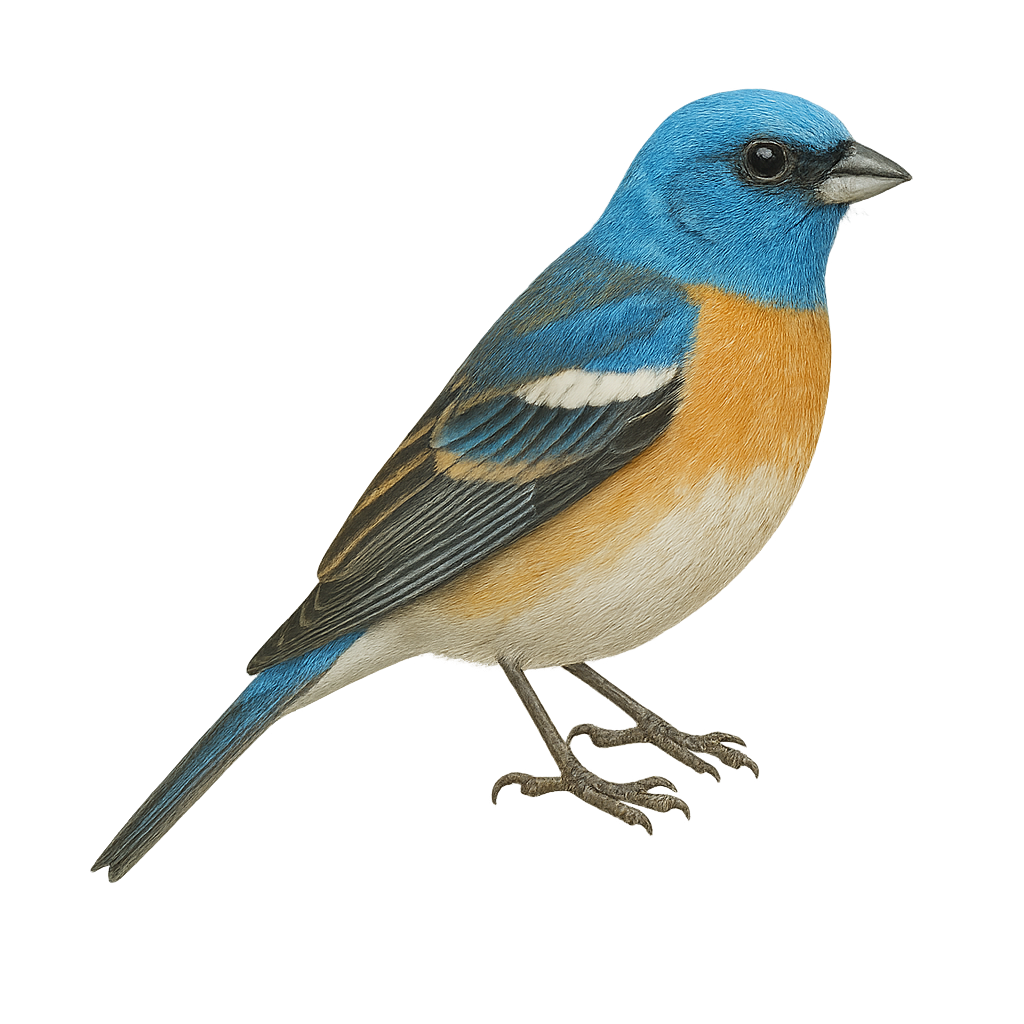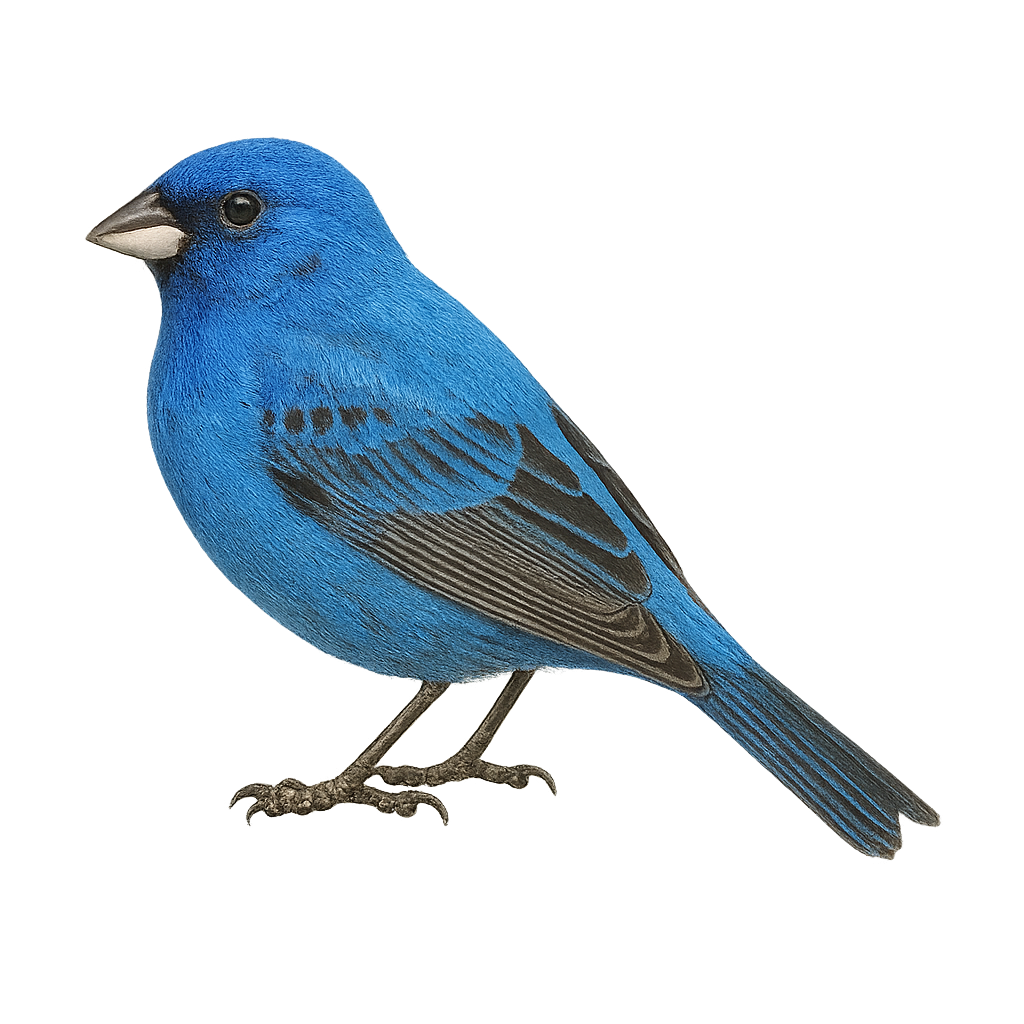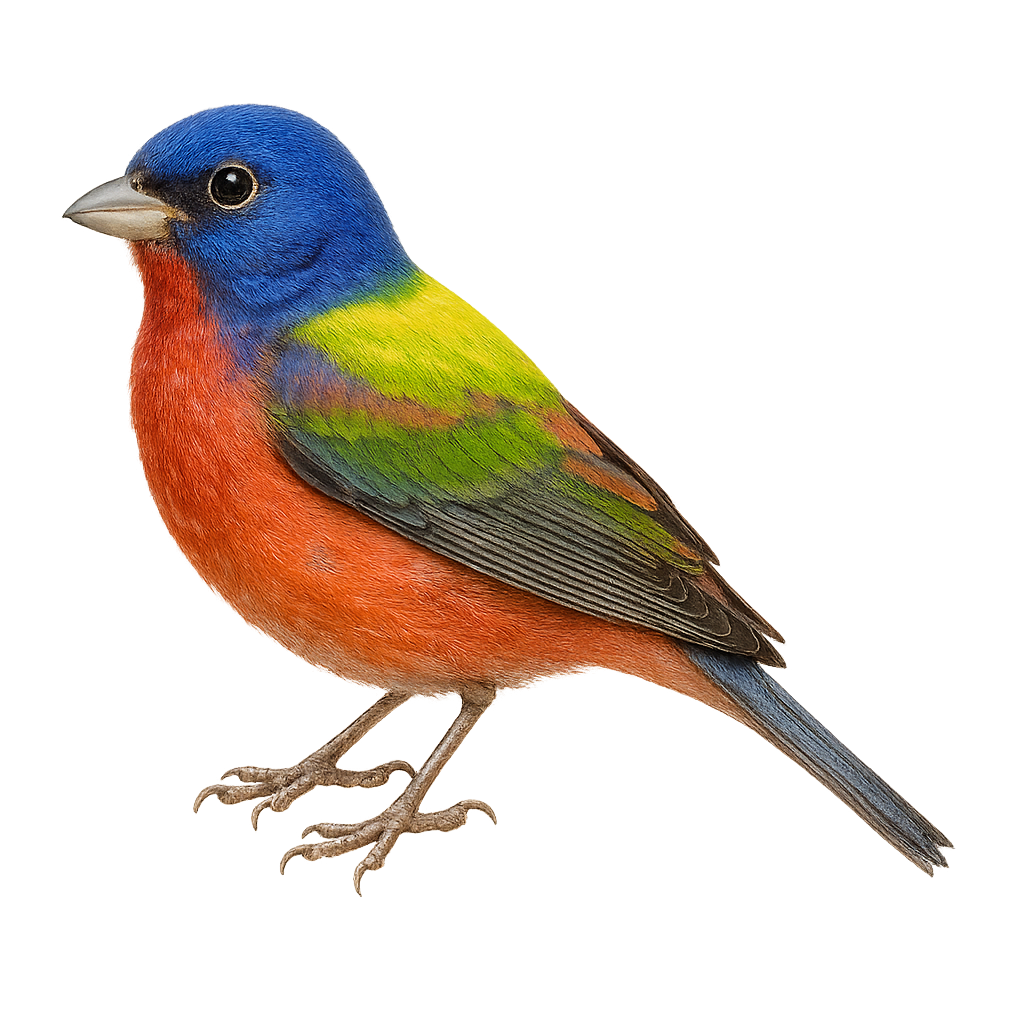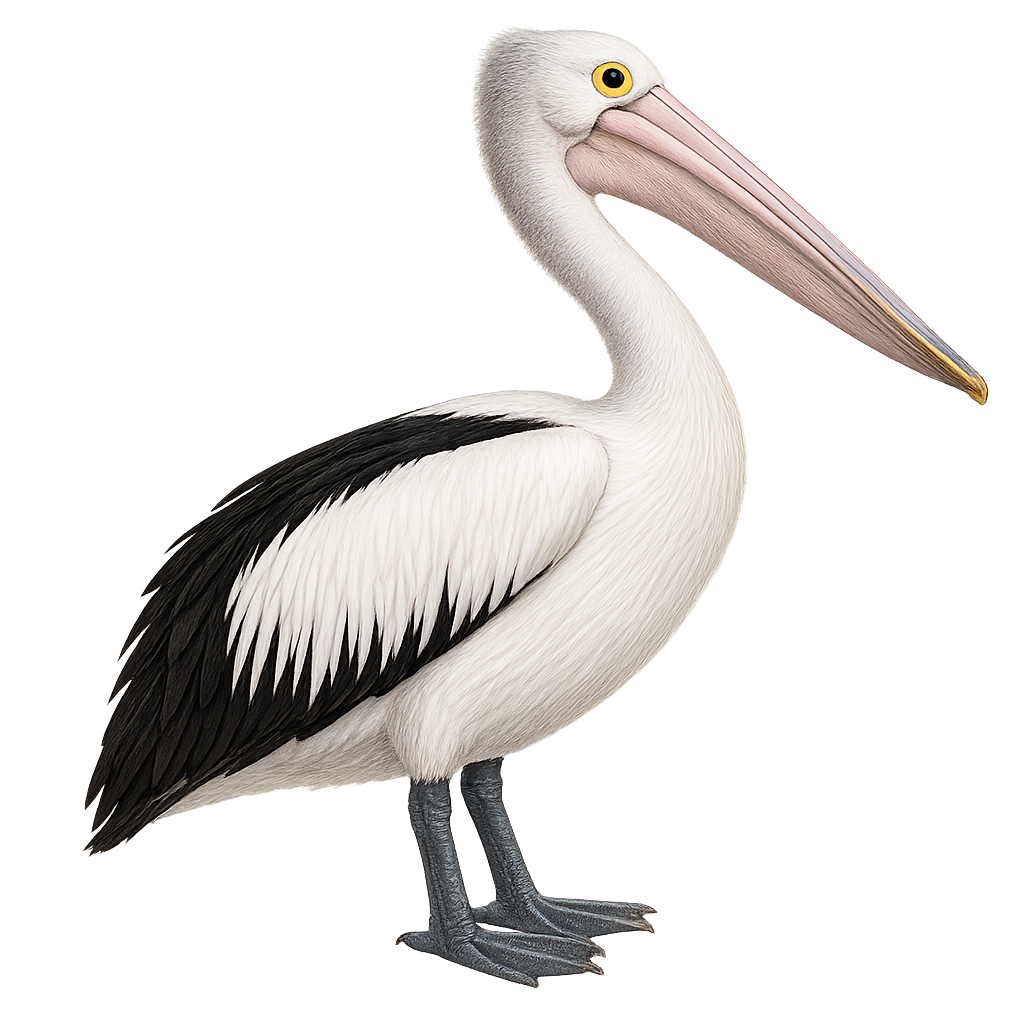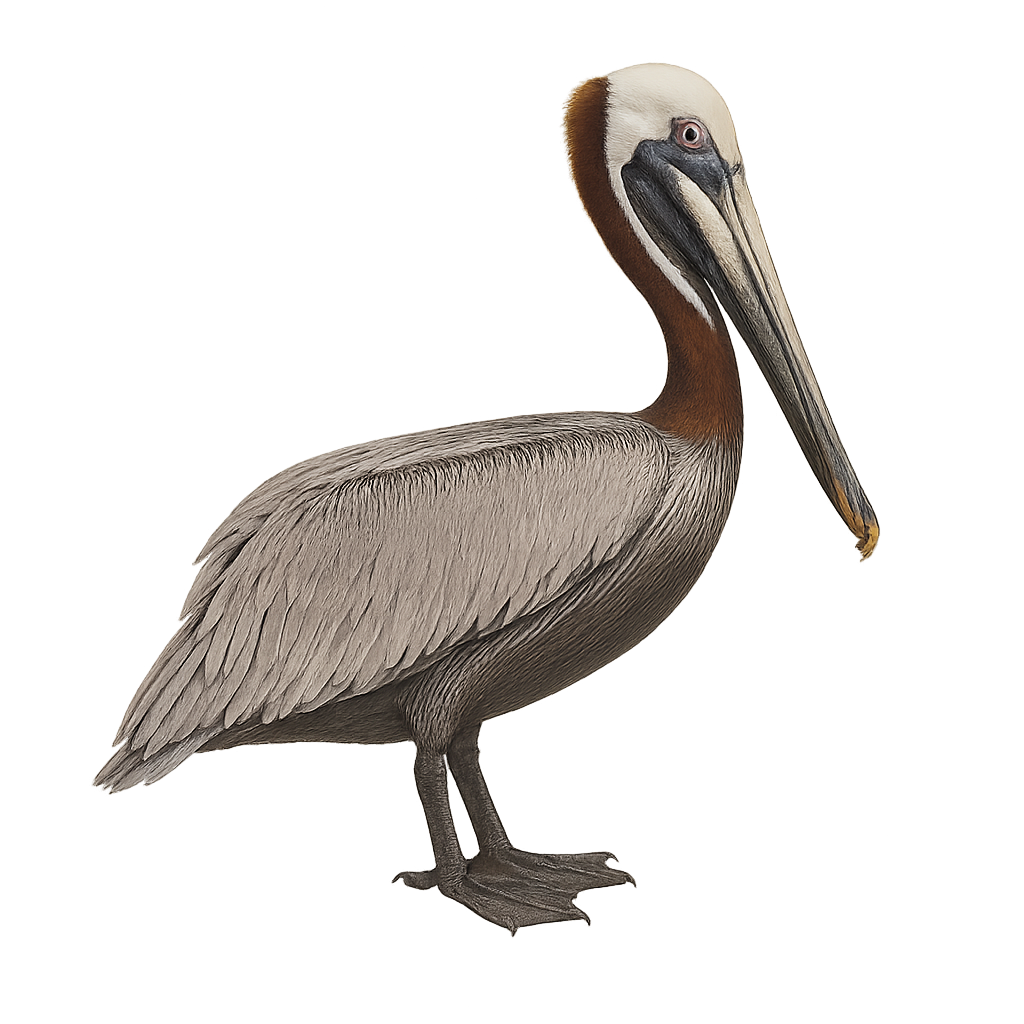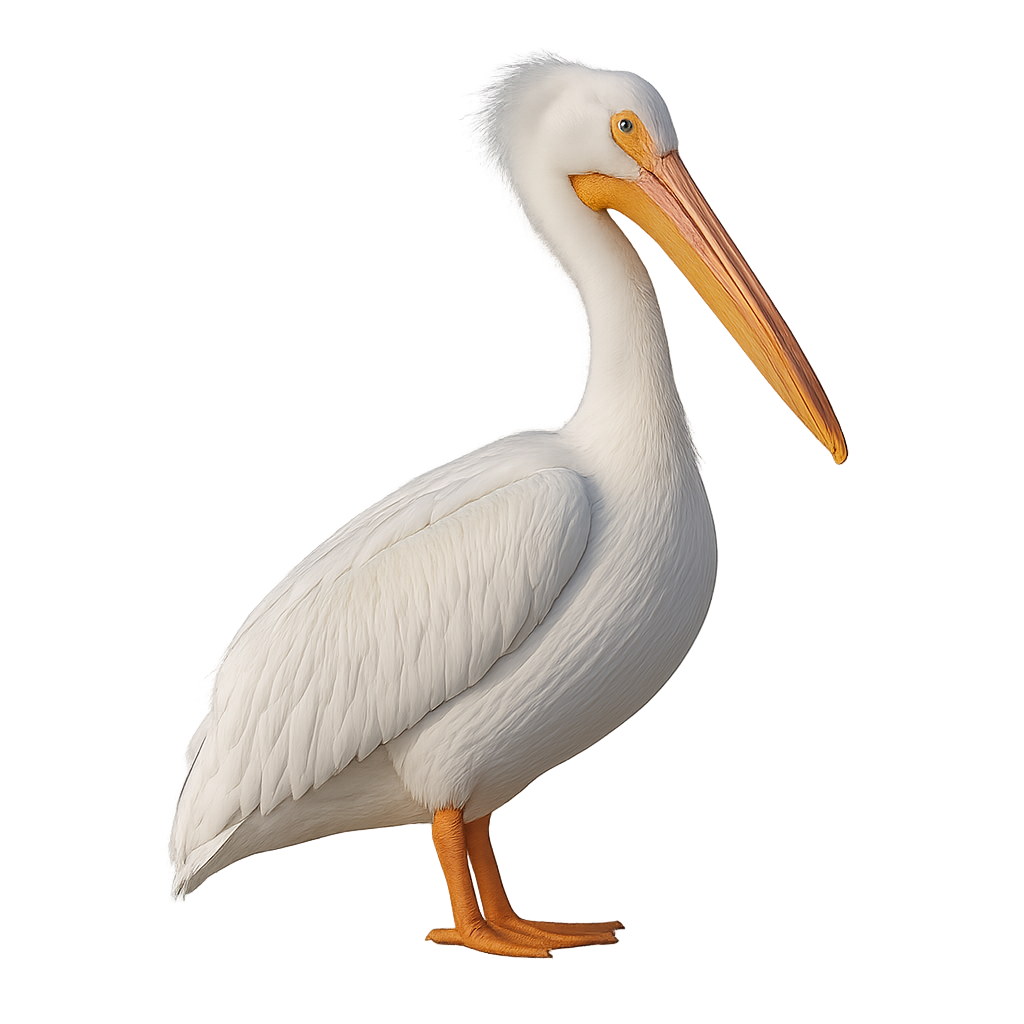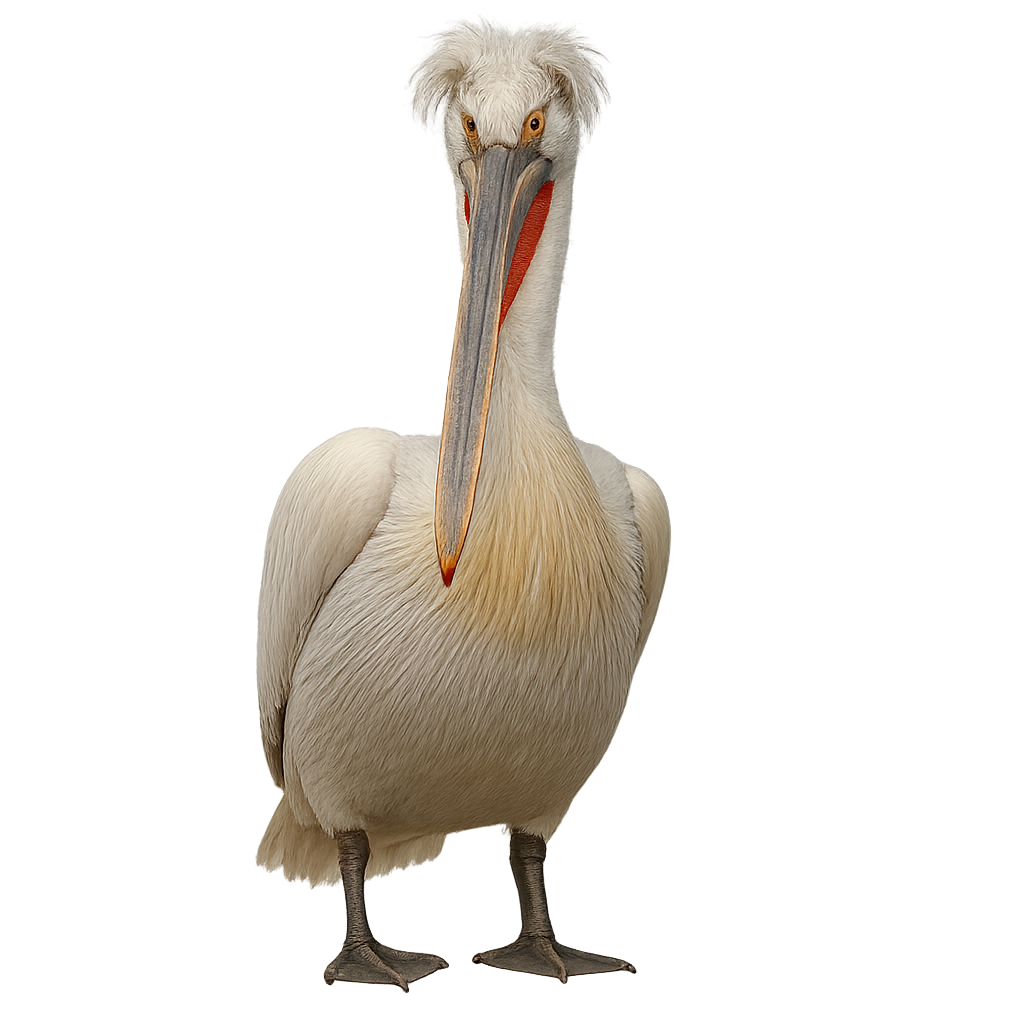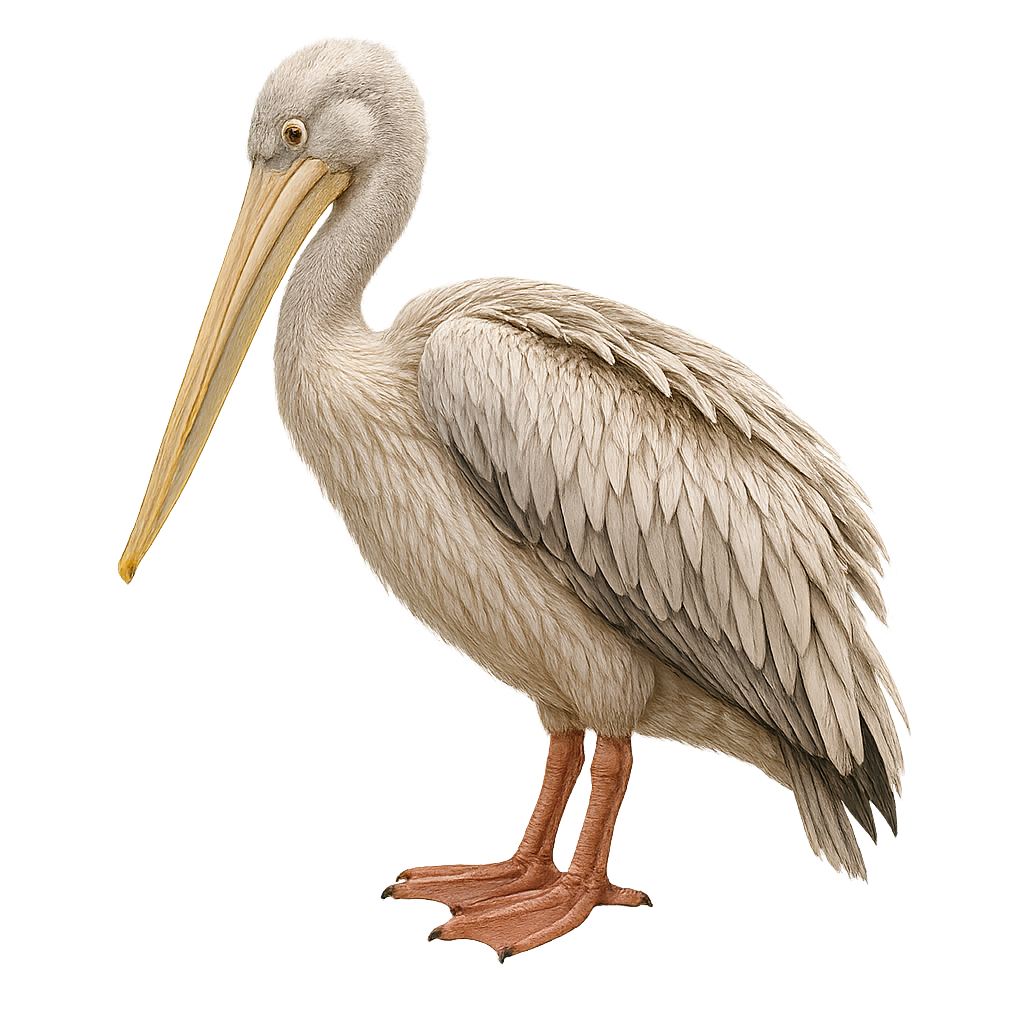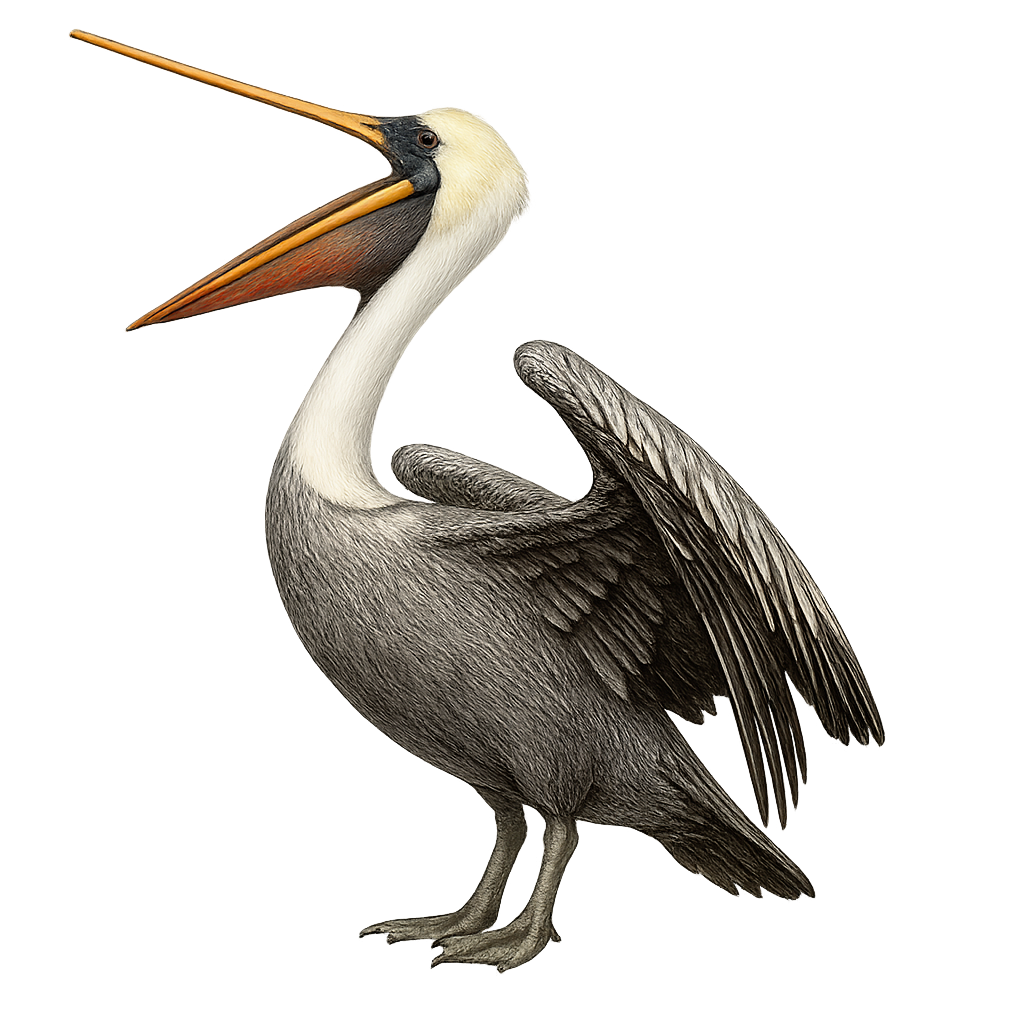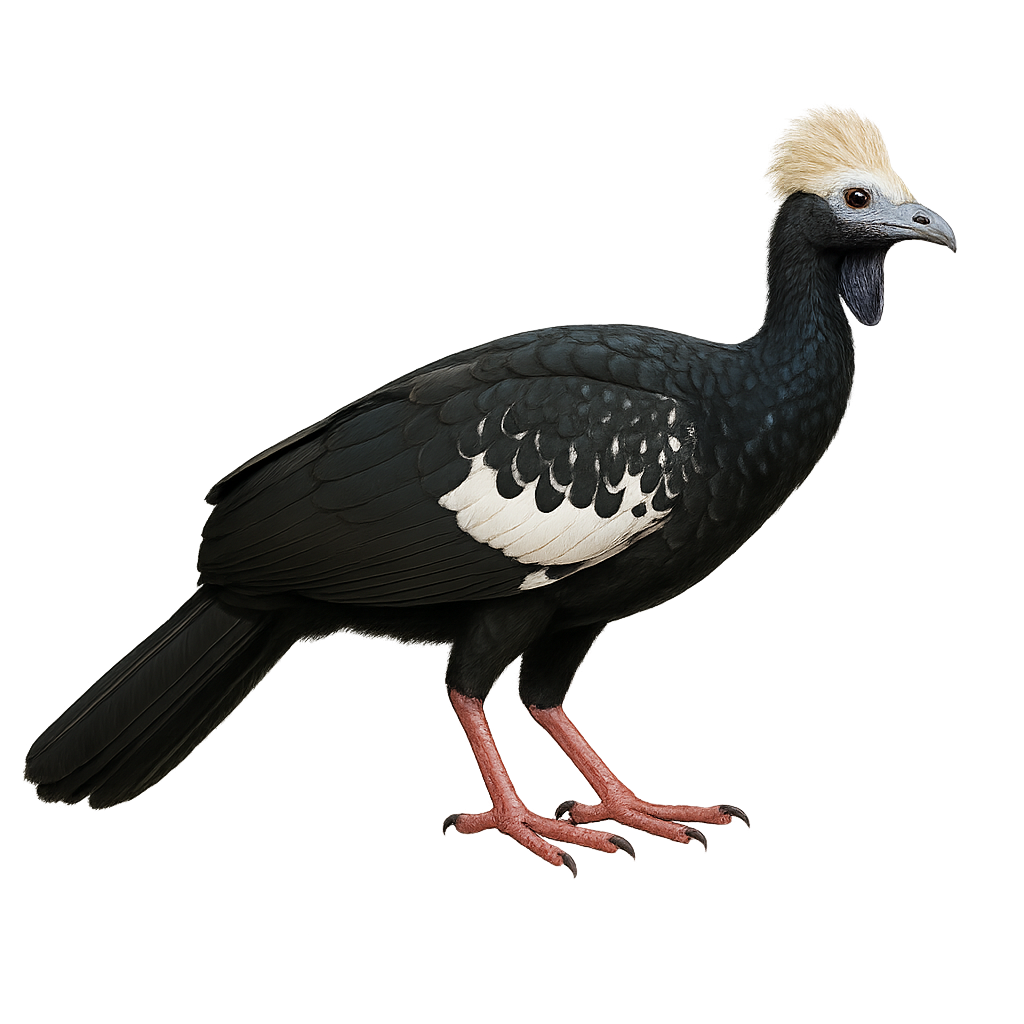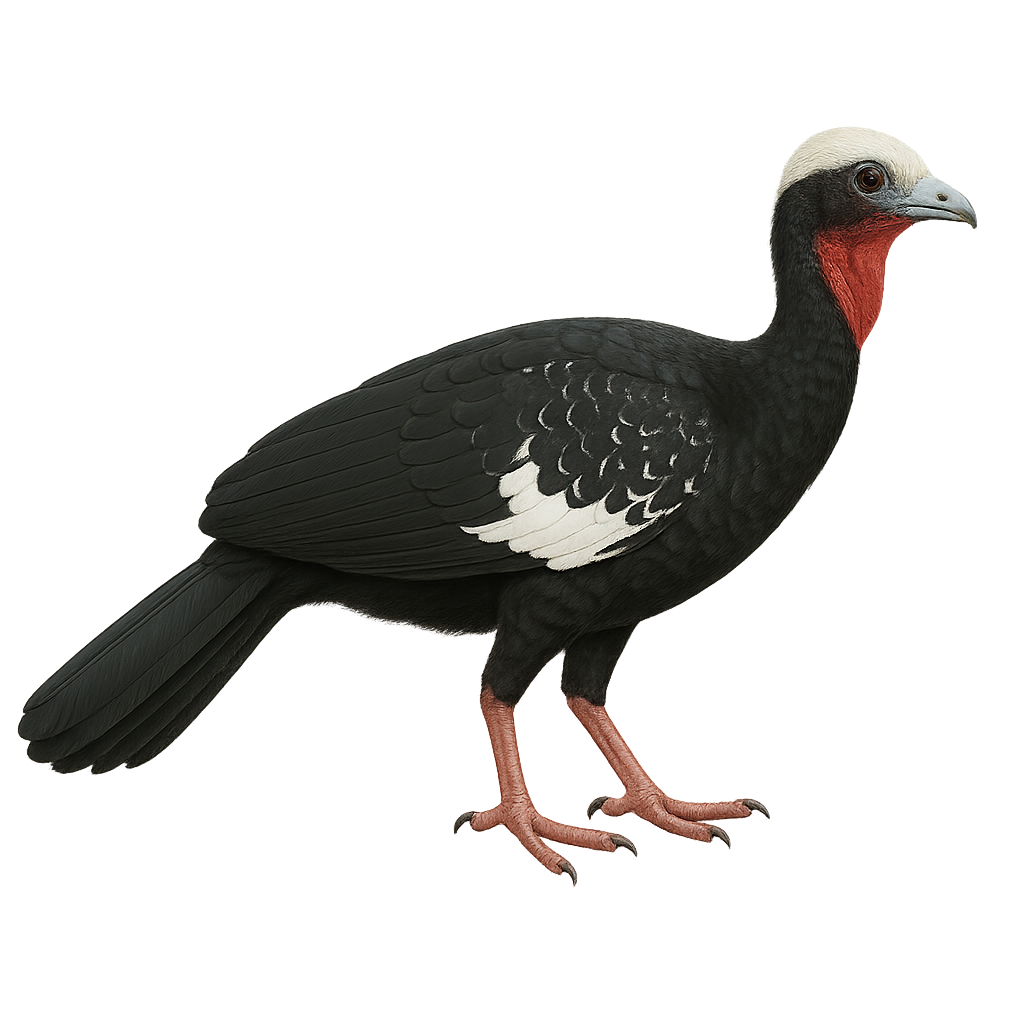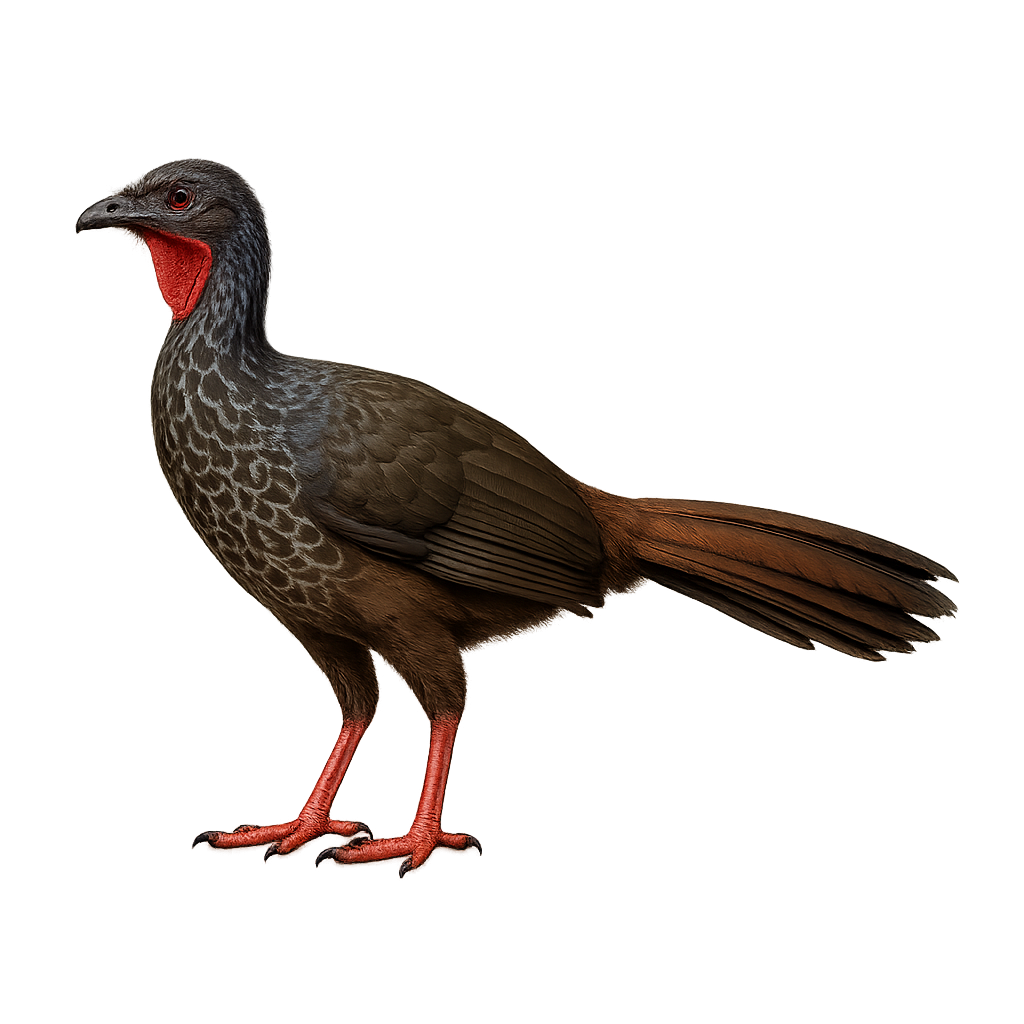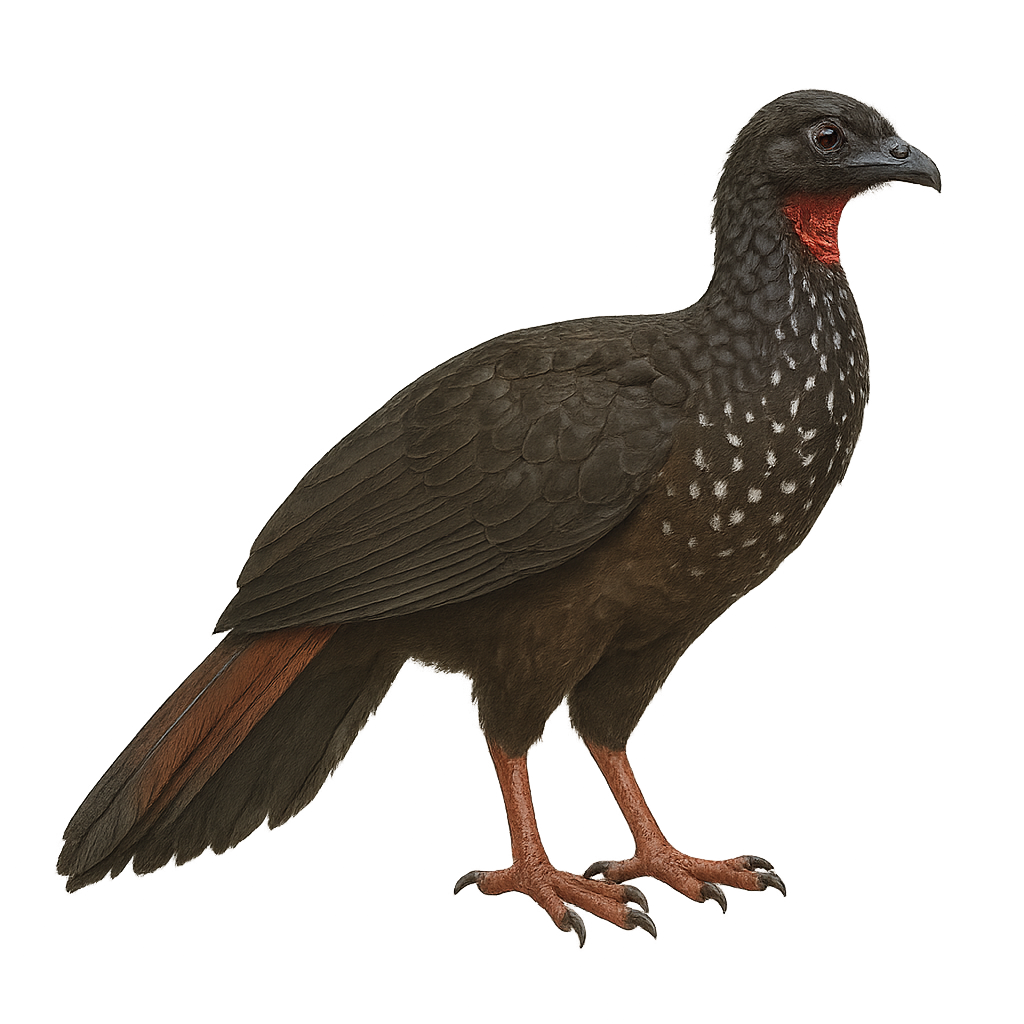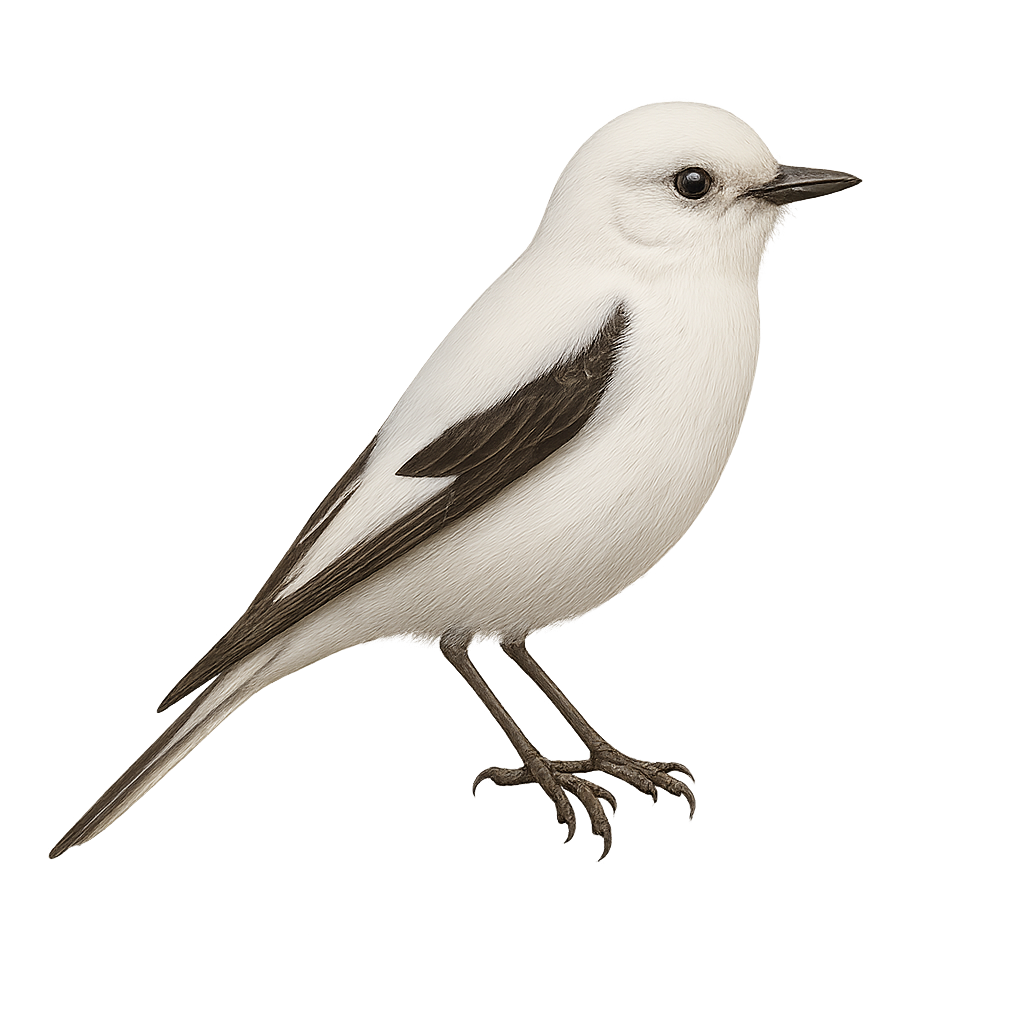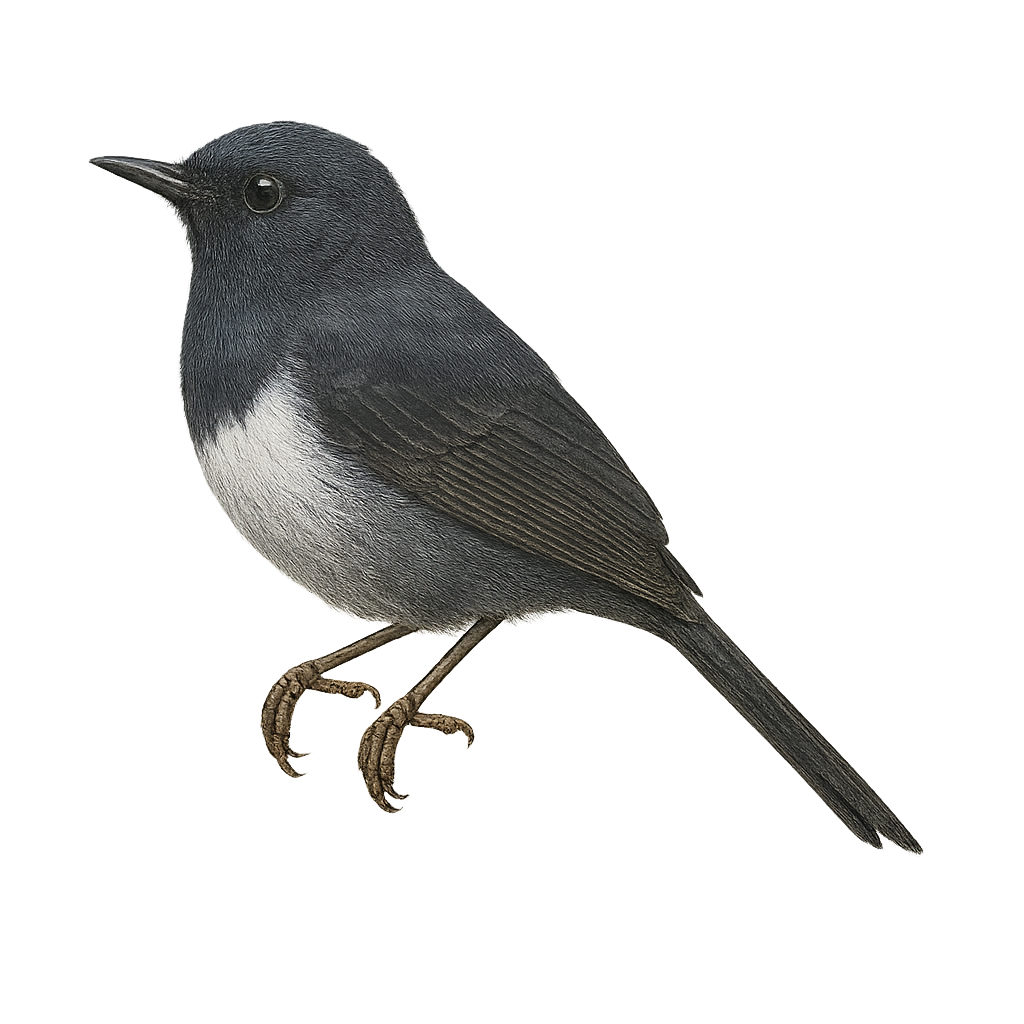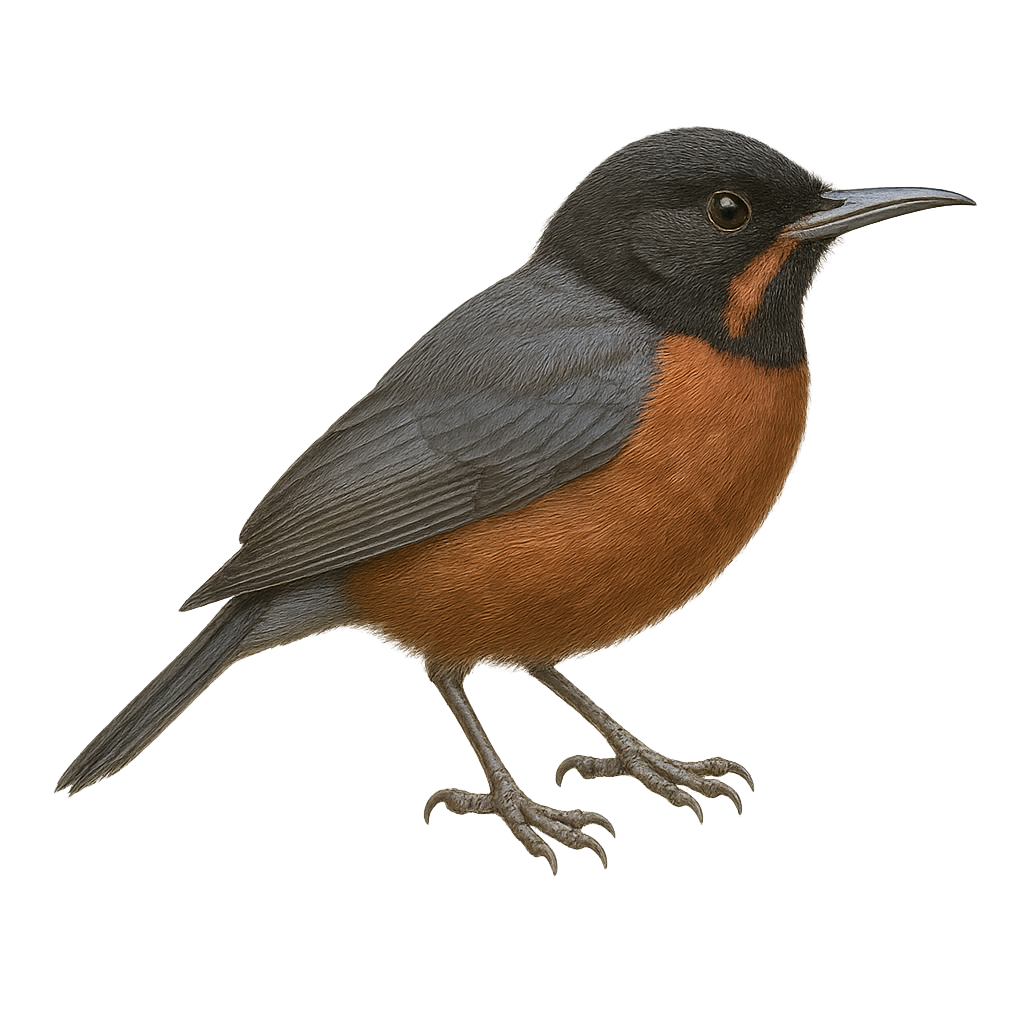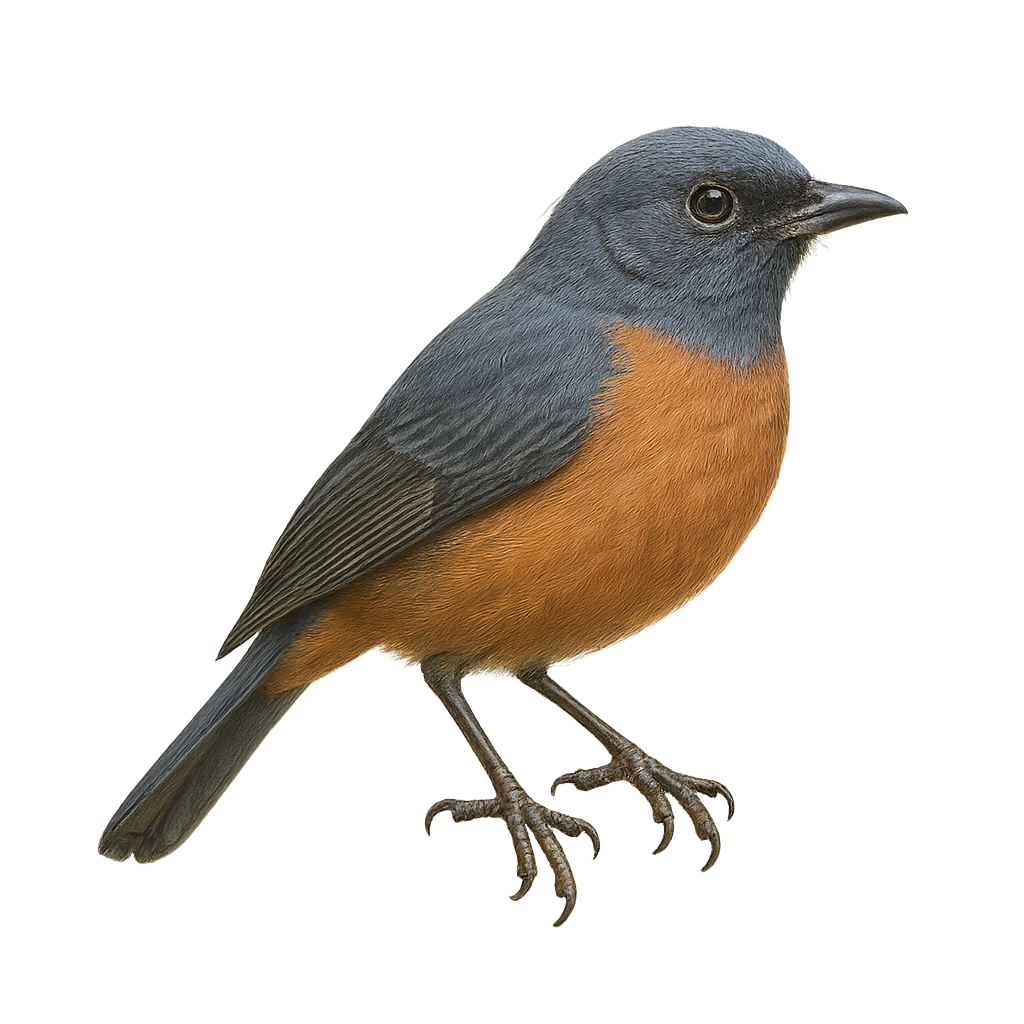The Townsend's Warbler is a small songbird belonging to the Parulidae family. It is primarily recognized by its distinctive plumage: an olive-green back, bright yellow breast, and black streaks on the head. Males display more pronounced patterns than females. This species is mainly found in the coniferous forests of western North America, where it feeds on insects and spiders. Migratory, it winters in the southern United States and Central America. The Townsend's Warbler is known for its melodious song, composed of clear and repetitive notes. Although its habitat is threatened by deforestation, it is currently classified as a species of least concern by the IUCN.
The Pine Warbler (Setophaga pinus) is a small songbird belonging to the Parulidae family, commonly found in pine forests across North America. It measures about 14 cm in length and weighs between 9 and 15 grams. Its plumage is primarily olive-green with yellowish tones on the chest and belly, and its wings feature two distinct white bars. Males and females are similar, though males are often more vibrant. The Pine Warbler is known for its melodious and repetitive song, often heard before it is seen. It primarily feeds on insects but also consumes seeds and berries, especially in winter.
The Prairie Warbler, Setophaga discolor, is a small songbird belonging to the Parulidae family. It is easily identified by its bright orange throat, olive-green back, and distinctive black streaks on its flanks. Males display more vibrant colors than females, especially during the breeding season. This passerine primarily inhabits open woodlands, scrublands, and wetlands in the southeastern United States. A migratory bird, it winters in the Caribbean and Central America. Its song is a soft, melodious trill, often heard in spring. The Prairie Warbler feeds mainly on insects and small spiders, which it catches by flitting agilely among branches.
The Canada Warbler is a small songbird known for its vibrant plumage and presence in North American forests. It features a bright yellow breast, contrasting with a gray head adorned with a distinctive black necklace. This migratory bird travels long distances between its breeding grounds in Canada and its wintering areas in South America. The Canada Warbler prefers moist forest habitats, often near watercourses, where it primarily feeds on insects. Although its song is melodious and easily recognizable, it can be challenging to spot due to its discreet behavior and preference for dense, shaded areas.
The American Redstart, Setophaga ruticilla, is a small songbird belonging to the Parulidae family. It is easily identifiable by its striking black and orange plumage in males, while females display more subdued shades of gray and yellow. This migratory bird breeds in North America and migrates to Central and South America for the winter. The American Redstart primarily inhabits open forests, groves, and moist wooded areas. It feeds mainly on insects, which it catches in flight with its agile and rapid movements. Its melodious and varied song is often heard in spring and summer, marking its territory and attracting mates.
The Black-throated Gray Warbler, Setophaga nigrescens, is a small songbird in the Parulidae family. It is easily identified by its black head contrasting with white cheeks and a black throat. Its back is gray with black streaks, and its wings have two distinct white bars. This passerine measures about 12 cm in length and weighs between 8 and 10 grams. It primarily inhabits coniferous and mixed forests, but can also be found in shrublands and oak forests. A migratory bird, it breeds in the western United States and winters in the southwestern U.S. and Mexico. Its song is a high-pitched, rapid trill, often heard in spring.
The Louisiana Waterthrush, or Parkesia motacilla, is a small songbird in the Parulidae family. It is characterized by its olive-brown upperparts and white underparts streaked with black. Its tail is often seen bobbing up and down, giving it its name. This bird inhabits moist forests and streams, feeding mainly on aquatic insects. It is migratory, spending winters in Central America and summers in North America. Known for its melodious and complex song, it is often heard near streams. Although its habitat is threatened by deforestation, it remains relatively common within its range.
The Common Yellowthroat, Geothlypis trichas, is a small songbird in the Parulidae family. It is easily recognized by its distinctive black mask that contrasts with its bright yellow throat. Males sport this black mask, while females and juveniles have duller colors. It primarily inhabits marshes, wet meadows, and shrubby areas across North America. Its song is a distinctive "wichity-wichity-wichity." The Common Yellowthroat is a migratory bird, wintering in Central America and the southern United States. It feeds mainly on insects and spiders, which it captures by foraging in dense vegetation.
The Prothonotary Warbler, or Protonotaria citrea, is a small songbird in the Parulidae family, easily recognizable by its bright yellow plumage and orange head. It primarily inhabits the humid forests and swamps of eastern North America. A migratory bird, it winters in Central America and northern South America. It feeds mainly on insects and spiders, which it captures in dense foliage. The Prothonotary Warbler is known for its melodious song and elaborate courtship displays. Although its population is stable, it is threatened by habitat loss due to urbanization and wetland drainage.
The Blackpoll Warbler, Setophaga striata, is a small songbird in the Parulidae family. It is easily identified by its distinctive plumage: males have a black cap, white cheeks, and black streaks on their back. Females and juveniles are duller, with olive tones and less pronounced streaking. This migratory species travels long distances between its breeding grounds in the boreal forests of North America and its wintering areas in South America. It primarily feeds on insects, which it catches by flitting through foliage. The Blackpoll Warbler is known for its melodious song and high-pitched calls. Although its conservation status is concerning due to habitat loss, it remains relatively common within its range.
The Red Warbler, scientifically known as Cardellina rubra, is a small songbird endemic to the mountainous forests of Mexico. It is notable for its bright red plumage, contrasting with its black face and slightly darker wings. Measuring about 12 to 13 cm in length, it is often seen actively moving through foliage in search of insects and small invertebrates. Its melodious and varied song is a distinctive feature, often used to mark territory or attract a mate. The Red Warbler prefers pine and oak forests at high altitudes, where it finds an ideal habitat for breeding and feeding.
The Lazuli Bunting, or Passerina amoena, is a small songbird native to North America, known for its vibrant plumage and melodious songs. The male displays bright colors with azure blue on the head and back, contrasting with a white belly and orange chest. The female, more subdued, has brown and gray tones. These birds inhabit open areas, forest edges, and thickets, feeding mainly on seeds and insects. Their breeding season spans from spring to summer, during which they build cup-shaped nests in shrubs. Lazuli Buntings are migratory, wintering in the southern United States and Mexico.
The Indigo Bunting, Passerina cyanea, is a small songbird native to North America, renowned for the male's vibrant blue plumage during the breeding season. Females and juveniles display a dull brown plumage, aiding in camouflage. These birds migrate south in winter, reaching as far as Central America. They favor open habitats like fields, forest edges, and thickets. Their diet mainly consists of seeds, insects, and berries. The Indigo Bunting's song is melodious and complex, often used to mark territory and attract mates.
The Painted Bunting is a small bird known for its vibrant plumage, primarily inhabiting the southern United States and parts of Mexico. Males display bright colors with a blue head, green back, and red belly, while females and juveniles are more subdued in olive green. These birds prefer habitats such as open woodlands, thickets, and shrub areas. They are often seen feeding on seeds and insects. Although they are relatively not very shy, they can be challenging to spot due to their discreet behavior and preference for dense habitats. Their melodious song is often the first clue to their presence.
The Spot-billed Pelican, or Pelecanus philippensis, is a large aquatic bird known for its distinctive spotted bill. It primarily inhabits the wetlands of South and Southeast Asia, including India, Sri Lanka, and Indonesia. This pelican feeds mainly on fish, which it catches using its long and powerful bill. Often seen in groups, it nests in trees near water bodies. Although its conservation status is concerning, efforts are underway to protect its natural habitats. The Spot-billed Pelican's plumage is mostly white with shades of grey, and it boasts an impressive wingspan that allows it to glide gracefully over the waters.
The Australian Pelican, or Pelecanus conspicillatus, is a large waterbird known for its striking white plumage, black wings, and enormous bill with an expandable pouch. Native to Australia, it frequents inland and coastal waters, primarily feeding on fish. Its impressive wingspan and majestic flight make it a fascinating sight. Although often seen in groups, it can also be solitary. Its ability to glide over long distances is remarkable, using warm air currents to conserve energy. The Australian Pelican is a symbol of Australian wildlife, admired for its beauty and natural elegance.
The Brown Pelican is a large seabird native to the American coasts, measuring between 100 and 137 cm in length with a wingspan of 200 to 228 cm. It is characterized by its brown-gray plumage, white head with a yellowish crown during the breeding season, and a long bill with an expandable throat pouch capable of holding up to 11 liters of water. This pelican is known for its dramatic fishing technique: diving from several meters high to catch fish, mainly sardines and anchovies. It inhabits coastal areas, estuaries, mangroves, and sandy beaches, nesting in colonies on islands or isolated areas. Although currently listed as Least Concern by the IUCN, the Brown Pelican experienced significant declines in the 20th century due to pesticide pollution, particularly DDT. Conservation efforts have led to population recoveries, but habitat degradation remains a concern.
The American White Pelican, or Pelecanus erythrorhynchos, is a large aquatic bird known for its striking white plumage and bright orange bill. It is primarily found in North America, frequenting lakes, rivers, and wetlands. In flight, its black wings contrast with its white body, creating a majestic silhouette. This gregarious bird feeds mainly on fish, which it captures using its bill's expandable pouch. During the breeding season, it forms colonies on isolated islands. Although its conservation status is currently "least concern," it is sensitive to human disturbances and water pollution.
The Dalmatian Pelican is a large aquatic bird primarily found in Eastern Europe, the Middle East, and parts of Asia. It measures about 1.5 to 1.8 meters in length, with a wingspan of 2.3 to 2.5 meters, and weighs between 7 and 15 kg. What distinguishes the Dalmatian Pelican is its white plumage, sometimes tinged with yellow or pink, as well as its distinctive crest and long curved bill. It also has a pouch under its bill that allows it to capture fish. The Dalmatian Pelican primarily feeds on fish, which it catches by diving into the water or filtering with its bill. It is typically found near lakes, rivers, and wetlands. While the population of the Dalmatian Pelican is stable in some regions, it is still threatened by habitat loss, water pollution, and human disturbance.
The Pink-backed Pelican, or Pelecanus rufescens, is a medium-sized waterbird known for its greyish plumage and slightly pinkish back. It has a long bill with a distinctive gular pouch used for catching fish. Its wings are broad and powerful, suited for gliding flight. Found mainly in sub-Saharan Africa, it inhabits lakes, rivers, and marshes. Sociable by nature, it often lives in colonies. Its breeding season varies by region, typically nesting in trees or on islets. Its diet consists mainly of fish, which it often hunts in groups.
The Peruvian Pelican, or Pelecanus thagus, is a large aquatic bird known for its long bill and distinctive throat pouch. It has predominantly grey plumage with white hues on the head and neck. This bird is often seen along the Pacific coasts from Ecuador to southern Chile. It primarily feeds on fish, which it catches through spectacular dives. During the breeding season, it forms colonies on coastal islands, where it builds rudimentary nests. Although its population is stable, it is sensitive to human disturbances and marine pollution.
The Blue-throated Piping Guan is a medium-sized bird belonging to the Cracidae family. It is primarily black with a distinctive blue face and white feathers on its wings. This bird is mainly found in the humid tropical forests of South America, particularly in Brazil, Colombia, and Venezuela. It is often seen in small groups or pairs, feeding on fruits, seeds, and occasionally insects. Although its habitat is threatened by deforestation, the Blue-throated Piping Guan is still relatively common in some areas. It plays a crucial role in seed dispersal, contributing to the health of its ecosystem.
The Red-throated Piping Guan, known scientifically as Pipile cujubi, is a medium-sized bird native to the tropical rainforests of South America, particularly in Brazil and Bolivia. It measures about 70 cm in length and is easily identified by its glossy black plumage and striking red throat. This bird primarily feeds on fruits, seeds, and insects. Often seen in small groups, the Red-throated Piping Guan moves gracefully through the canopy. Despite habitat loss due to deforestation, it remains relatively common in certain areas. Its vocalizations consist of a mix of whistles and coos, often heard at dawn.
The Cauca Guan is a rare and endemic bird of Colombia, primarily found in the humid forests of the Western Andes. This medium-sized bird, measuring about 85 cm, is distinguished by its dark brown plumage and reddish throat. It lives in small groups and feeds mainly on fruits, leaves, and flowers. Unfortunately, it is threatened by deforestation and hunting, leading to a significant decline in its population. Conservation efforts are crucial for its survival. Its call is a deep, resonant sound, often heard at dawn and dusk.
The Crested Guan is a large forest bird, measuring between 76 and 91 cm in length and weighing up to 2.4 kg. It has dark olive-brown plumage with white spots on the neck and chest, a rufous rump and belly, and a bushy crest on its head. Its throat features a large red wattle, and the skin around the eye is bluish-gray. Social in nature, it lives in pairs or family groups of 6 to 12 individuals, feeding on fruits and young leaves in the trees. It builds its nest in trees, where the female lays two or three white eggs. Although classified as Near Threatened by the IUCN, it is vulnerable to habitat loss and hunting.
The Trinidad Piping Guan, or Pipile pipile, is a rare and endemic bird of Trinidad Island. This large bird, part of the Cracidae family, is recognizable by its glossy black plumage, distinctive white throat, and long red legs. It primarily inhabits the island's tropical rainforests and wooded areas. This bird is mainly frugivorous, feeding on fruits, seeds, and occasionally insects. Unfortunately, the Trinidad Piping Guan is threatened by habitat loss and hunting. It is classified as vulnerable by the IUCN. Its conservation is crucial to maintaining Trinidad's unique biodiversity.
The Xolmis irupero, or White Monjita, is a passerine bird from the Tyrannidae family. It is primarily found in open regions of South America, particularly in Argentina, Brazil, Uruguay, and Paraguay. This bird is notable for its striking white plumage, contrasting with its reddish belly and black wings. It measures about 20 cm in length and has a sturdy beak suited for its insectivorous diet. The White Monjita is often seen perched on branches or power lines, from where it monitors its territory. Its song is a melodious whistle, often heard at dawn and dusk. Although relatively common, preserving its natural habitat is crucial for its survival.
The White-sided Flowerpiercer is a small passerine bird belonging to the Thraupidae family. It is primarily found in the mountainous regions of South America, particularly in Colombia, Ecuador, and Venezuela. This bird is notable for its dark plumage contrasted by distinctive white flanks. It has a thin, slightly curved beak, adapted to its specialized diet. It primarily feeds on nectar but also consumes insects and fruits. The White-sided Flowerpiercer is often seen piercing the bases of flowers to access nectar, a technique that earned it its name. It typically inhabits humid forests, forest edges, and shrublands at altitudes ranging from 1500 to 3000 meters.
The Rusty Flowerpiercer is a small passerine bird belonging to the Thraupidae family. It is primarily found in the mountainous regions of the Andes, where it inhabits humid forests and scrublands. Its plumage is characterized by a brownish coloration on the belly, contrasting with darker shades on the back and wings. This bird is known for its thin, curved beak, adapted to its flower-piercing technique to access nectar. Although often solitary, it can be seen in small groups when foraging. Its song is discreet but plays a crucial role in communication among individuals.
The Black-throated Flowerpiercer is a small passerine bird belonging to the Thraupidae family. It is primarily found in the high-altitude forests of Mexico and Central America. This bird is recognizable by its black throat contrasting with its blue-gray plumage. It mainly feeds on nectar, which it obtains by piercing the base of flowers with its specialized beak, but it also consumes insects. The Black-throated Flowerpiercer is often seen in pairs or small groups. It is known for its territorial behavior, vigorously defending its territory against intruders. Although its habitat is threatened by deforestation, it is currently classified as of least concern by the IUCN.


